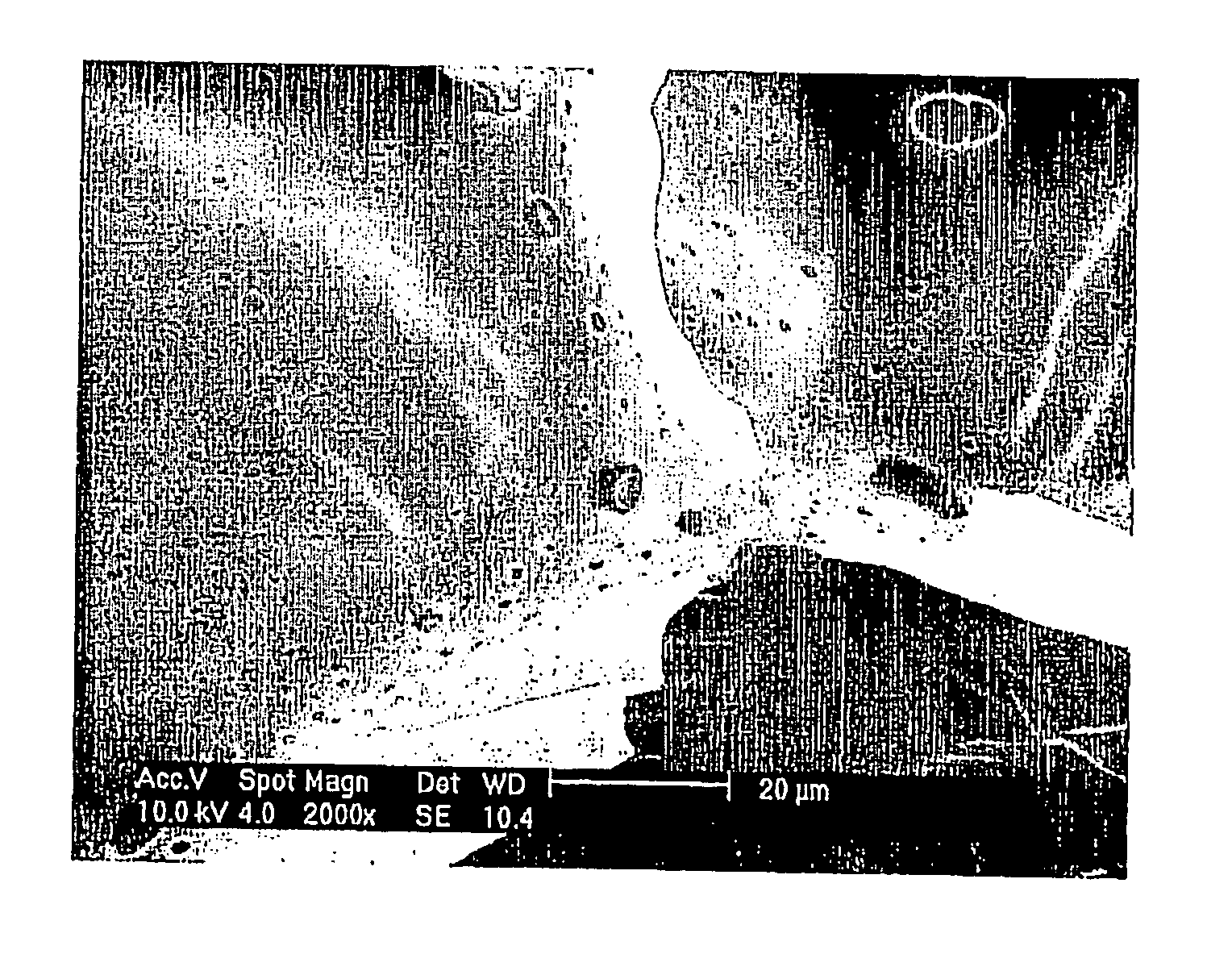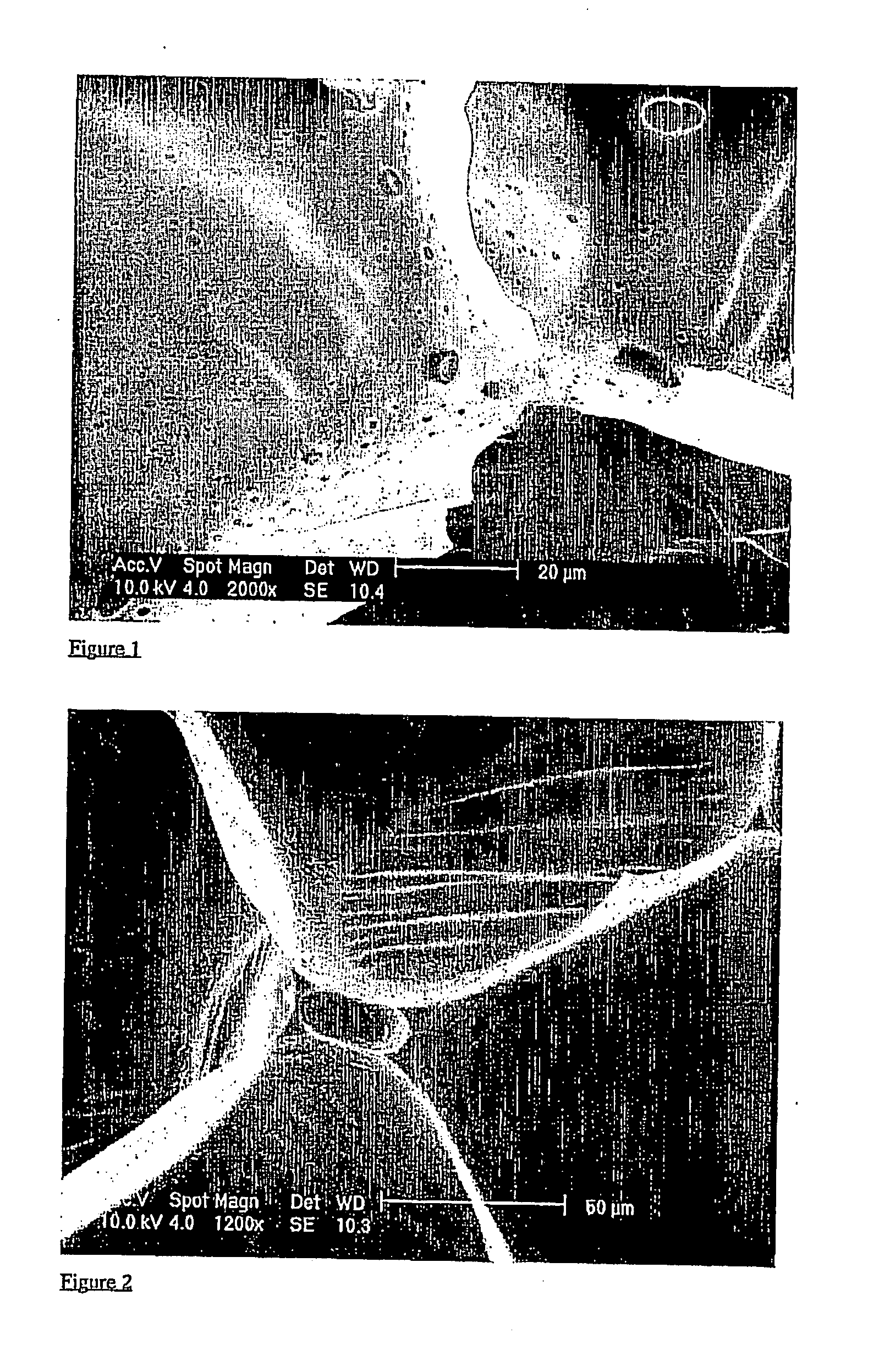Toughened Phenolic Foam
a technology of phenolic foam and phenolic resin, which is applied in the field of phenolic resins, can solve the problems of adversely affecting the ability to form closed cell foam, and loss of chemical blowing agent from the cells, and achieves the effect of low resin viscosity and profound effect on thermal conductivity
- Summary
- Abstract
- Description
- Claims
- Application Information
AI Technical Summary
Benefits of technology
Problems solved by technology
Method used
Image
Examples
example 1
[0047] The following example demonstrates how the foam shown in FIGS. 3a and 3b was prepared.
[0048] Here, polyvinyl pyrrolidone is present in the phenolic resin. The resin system has a water content of 10% including additives but excluding acid and blowing agent.
[0049] PVP Grade K15 thermoplastic is pre-dissolved in ethylene glycol in 1:1 weight proportions at 70° C. and allowed to cool to 20° C.
[0050] Then, 12.37 g of PVP K15 / ethylene glycol solution was added to 67 g of Resin C (water content 12.4% by weight), and mixed until homogeneous. 3.16 g of micronised urea was added to this resin and mixed into the resin at 17° C. The resin mix was allowed to stand for 1 hour. Then 7.3 g of pre-blended cyclopentane / isopentane (85 / 15 by weight) with 0.8 g of PF5050 perfluoroalkane as blowing agent mixture at 5° C. was pre-mixed into the resin. With the resin temperature at 16.8° C., 13.69 g of liquid para toluene sulphonic acid / xylene sulphonic acid blend (65 / 35 w / w) at 92% concentration...
example 2
[0055] The following example shows how the foam shown in FIG. 4 was prepared.
[0056] Polyvinyl pyrrolidone is present in the foam. The resin system including additives, urea, polyvinyl pyrrolidone and ethylene glycol has an increased water content of 14.1% excluding the addition of acid and blowing agent.
[0057] PVP Grade K15 thermoplastic is pre-dissolved in ethylene glycol in 1:1 weight proportions at 70° C. and allowed to cool to 20° C. Then, 12.37 g of PVP K15 / ethylene glycol solution was added to 68.1 g of Resin B (water content 13.9% by weight), and mixed until homogeneous. 3.16 g of micronised urea was added to this resin and mixed into the resin at 14° C. This was followed by 2.68 g of water. The resin mix was allowed to stand for 1 hour. Then 6.5 g of pre-blended cyclo-pentane / isopentane (85 / 15 by weight) with 0.7 g of PF5050 perfluoroalkane as blowing agent mixture at 5° C. was premixed into the resin. Finally, 14.39 g of liquid para toluene sulphonic acid / xylene sulphonic...
PUM
| Property | Measurement | Unit |
|---|---|---|
| Fraction | aaaaa | aaaaa |
| Fraction | aaaaa | aaaaa |
| Percent by mass | aaaaa | aaaaa |
Abstract
Description
Claims
Application Information
 Login to View More
Login to View More - R&D
- Intellectual Property
- Life Sciences
- Materials
- Tech Scout
- Unparalleled Data Quality
- Higher Quality Content
- 60% Fewer Hallucinations
Browse by: Latest US Patents, China's latest patents, Technical Efficacy Thesaurus, Application Domain, Technology Topic, Popular Technical Reports.
© 2025 PatSnap. All rights reserved.Legal|Privacy policy|Modern Slavery Act Transparency Statement|Sitemap|About US| Contact US: help@patsnap.com



